Builders Waste Clearance in Coney Hall
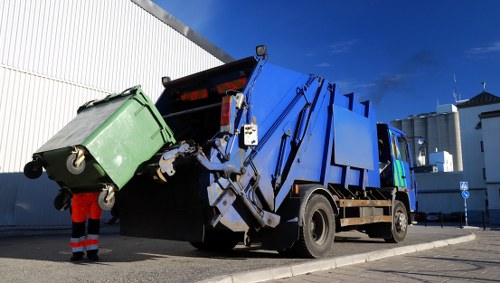
Embarking on a construction project is an exciting endeavor, but it comes with its own set of challenges. One significant aspect that often gets overlooked is the management of builders waste. Proper waste clearance is not just about maintaining a tidy workspace; it's a critical component that ensures the project's success and sustainability.
In Coney Hall, a bustling area with numerous construction activities, the need for efficient builders waste clearance services has never been more paramount. Whether you're working on a residential building, a commercial complex, or a renovation project, managing waste effectively can save time, reduce costs, and minimize environmental impact.
This comprehensive article delves into the intricacies of builders waste clearance in Coney Hall, exploring its importance, the services available, benefits of professional clearance, and tips for selecting the right service provider. By the end of this guide, you'll have a clear understanding of how to manage construction waste efficiently and responsibly.
Understanding Builders Waste Clearance
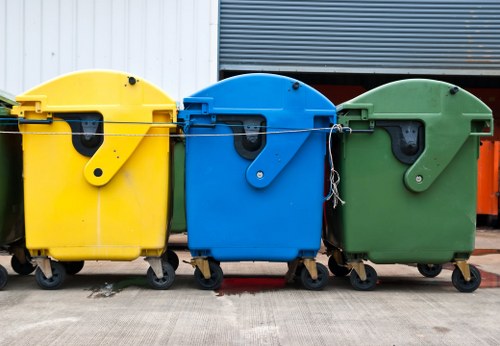
Builders waste clearance refers to the process of removing debris and waste materials generated during construction projects. This waste can range from concrete and bricks to timber, metals, and other construction by-products. Effective waste clearance involves not only the removal of these materials but also their proper sorting, recycling, and disposal.
Types of Builders Waste
Construction sites generate a variety of waste materials, each requiring specific handling and disposal methods:
- Concrete and Masonry: These materials are often recycled and repurposed for other construction projects.
- Wood: Timber waste can be reused or processed into mulch or other wood products.
- Metals: Steel and other metals are highly recyclable and can be sold to scrap dealers.
- Plastics: While some plastics can be recycled, others may require special disposal methods.
- Hazardous Waste: Materials like asbestos, paints, and solvents need to be handled with care to prevent environmental contamination.
The Clearance Process
The builders waste clearance process typically involves several key steps:
- Assessment: Evaluating the type and volume of waste generated.
- Segregation: Sorting waste into recyclable and non-recyclable categories.
- Collection: Transporting the sorted waste from the construction site.
- Recycling and Disposal: Ensuring that recyclable materials are repurposed and non-recyclable waste is disposed of in compliance with local regulations.
- Documentation: Keeping records of waste management activities for regulatory compliance.
The Importance of Waste Clearance in Coney Hall's Construction Industry
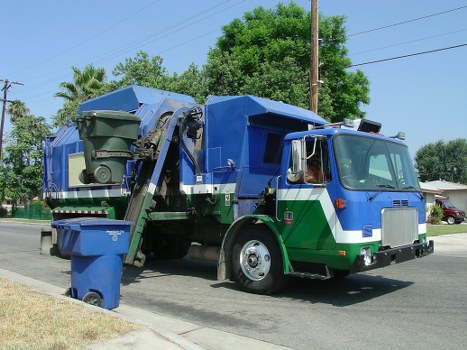
The construction industry in Coney Hall is thriving, contributing significantly to the area's economic growth. However, this boom comes with environmental responsibilities. Proper waste clearance is essential for several reasons:
Environmental Protection
Improper disposal of construction waste can lead to environmental degradation. Runoff from construction sites can contaminate local water sources, while excessive waste in landfills contributes to soil and air pollution. Effective waste clearance minimizes these risks by ensuring that waste is managed responsibly.
Regulatory Compliance
Local regulations in Coney Hall mandate specific guidelines for waste disposal. Non-compliance can result in hefty fines and project delays. Professional waste clearance services are well-versed in these regulations, ensuring that your project adheres to all legal requirements.
Site Safety
A cluttered construction site poses safety hazards to workers and visitors. Sharp objects, unstable piles of debris, and scattered materials can lead to accidents. Regular waste clearance maintains a safe working environment, reducing the risk of injuries.
Cost Efficiency
Effective waste management can lead to significant cost savings. Recycling materials reduces the amount of waste that needs to be transported to landfills, lowering disposal fees. Additionally, some waste materials can be sold or reused in other projects, further offsetting costs.
By prioritizing builders waste clearance, construction projects in Coney Hall can achieve operational efficiency, safety, and environmental compliance.
Services Offered by Builders Waste Clearance Companies in Coney Hall
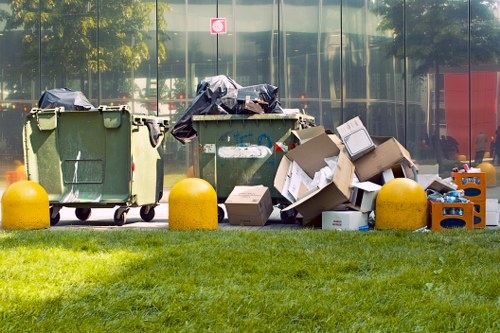
Builders waste clearance companies in Coney Hall provide a range of services designed to address the unique needs of construction projects. These services ensure that waste management is handled professionally and efficiently.
Comprehensive Waste Removal
From heavy construction debris like concrete and bricks to lighter materials such as drywall and insulation, waste clearance companies handle all types of construction waste. They use specialized equipment to remove large volumes of debris quickly and safely.
Recycling and Reuse
Many builders waste clearance services prioritize recycling and reuse. Materials such as metal, wood, and certain plastics are sorted and sent to recycling facilities, reducing the environmental impact of construction waste.
Hazardous Waste Management
Handling hazardous materials requires expertise and adherence to strict regulations. Professional waste clearance companies are trained to manage and dispose of hazardous waste safely, ensuring compliance with environmental laws.
On-Site Waste Management Consultations
Some services offer consultations to help construction projects implement effective waste management plans. These consultations can include waste reduction strategies, recycling programs, and training for site workers.
Scheduled Waste Collection
Regular waste collection schedules ensure that waste does not accumulate, maintaining a clean and safe construction site. This service is particularly beneficial for large projects with continuous waste generation.
Documentation and Reporting
Accurate record-keeping is essential for regulatory compliance. Waste clearance companies provide detailed reports on waste types, quantities, and disposal methods, simplifying the documentation process for construction companies.
By offering these comprehensive services, builders waste clearance companies in Coney Hall play a pivotal role in the construction industry's sustainability and efficiency.
Benefits of Hiring Professional Builders Waste Clearance Services
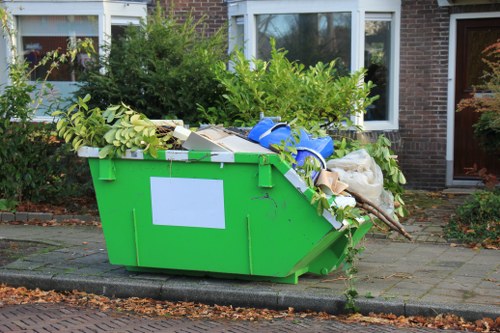
Opting for professional waste clearance services brings numerous advantages that can significantly enhance your construction project's success.
Efficiency and Time Savings
Professional waste clearance teams are equipped with the necessary tools and expertise to manage waste swiftly. This efficiency ensures that waste does not hinder the construction workflow, keeping the project on schedule.
Enhanced Safety
Trained waste clearance personnel understand the best practices for handling and disposing of construction waste. Their expertise reduces the likelihood of accidents and injuries on-site, fostering a safer working environment.
Environmental Stewardship
By prioritizing recycling and responsible disposal, professional services contribute to environmental conservation. This commitment not only benefits the community but also enhances the reputation of your construction company as environmentally conscious.
Cost-Effective Solutions
While there is an upfront cost associated with hiring waste clearance services, the long-term benefits outweigh these expenses. Efficient waste management can lower disposal fees, reduce the need for additional labor, and generate revenue through the sale of recyclable materials.
Regulatory Compliance
Navigating waste disposal regulations can be complex. Professional services ensure that all waste management practices comply with local laws, preventing potential fines and legal issues.
Focus on Core Activities
Outsourcing waste management allows construction teams to concentrate on their primary tasks without the distraction of handling debris. This focus enhances productivity and project quality.
Overall, the benefits of hiring professional builders waste clearance services extend beyond mere waste removal. They encompass safety, cost savings, environmental responsibility, and regulatory compliance, all of which are essential for a successful construction project in Coney Hall.
How the Clearance Process Works
Understanding the steps involved in the builders waste clearance process can help you better manage your construction project's waste and collaborate effectively with service providers.
Initial Assessment and Planning
Before any waste is removed, professionals conduct a thorough assessment of the construction site. This involves identifying the types of waste generated, estimating volumes, and planning the logistical aspects of waste removal.
Site Inspection
A detailed site inspection helps in understanding the scope of waste management required. Factors such as the size of the project, types of materials used, and the layout of the site are considered during this phase.
Waste Categorization
Based on the assessment, waste is categorized into different types, such as recyclable, non-recyclable, and hazardous. This categorization is crucial for determining the appropriate disposal methods.
Segregation and Sorting
Effective waste clearance begins with the segregation and sorting of materials. This process involves separating recyclable materials like metals and wood from general construction debris.
On-Site Sorting
Workers are trained to sort waste on-site, ensuring that recyclable materials are not contaminated. Proper sorting maximizes recycling opportunities and reduces the amount of waste sent to landfills.
Storage and Containment
Once sorted, materials are stored in designated containers or areas, preventing cross-contamination and facilitating easy removal by waste clearance teams.
Collection and Transportation
After sorting, waste is collected and transported to appropriate facilities for recycling or disposal. Professional services use specialized vehicles and equipment to handle large volumes efficiently.
Loading and Transportation
Efficient loading techniques reduce the time and labor required for waste removal. Transportation routes are planned to minimize travel time and fuel consumption.
Disposal and Recycling
At the disposal or recycling facilities, waste is processed according to its category. Recyclable materials are repurposed, while non-recyclable waste is managed in compliance with environmental regulations.
Final Assessment and Reporting
Post-clearance, a final assessment ensures that all waste has been appropriately managed. Detailed reports are generated, documenting the types and quantities of waste handled, providing transparency and accountability.
The systematic clearance process ensures that builders waste is managed efficiently, safely, and responsibly, contributing to the overall success and sustainability of construction projects in Coney Hall.
Choosing the Right Builders Waste Clearance Service in Coney Hall
Selecting the appropriate waste clearance service is a critical decision that can impact the efficiency, cost, and environmental footprint of your construction project. Here are key factors to consider when making this choice:
Experience and Expertise
Opt for companies with extensive experience in builders waste clearance. Experienced providers are more likely to handle various types of waste effectively and navigate any challenges that arise during the process.
Range of Services
Ensure that the service provider offers a comprehensive range of services that align with your project's specific needs, including hazardous waste management, recycling services, and scheduled collections.
Environmental Responsibility
Choose companies that prioritize sustainability through robust recycling programs and eco-friendly disposal methods. This commitment not only benefits the environment but also enhances your project's sustainability credentials.
Cost Transparency
Understanding the pricing structure is essential to avoid unexpected expenses. Look for companies that offer transparent pricing with no hidden fees, and ensure that their services fit within your budget.
Reputation and Reviews
Research the company's reputation by reading reviews and testimonials from previous clients. A reputable service provider with positive feedback is more likely to deliver quality and reliable services.
Compliance with Regulations
Ensure that the waste clearance service adheres to local regulations and industry standards. Compliance is crucial to avoid legal issues and ensure that waste is managed responsibly.
Customer Service
Effective communication and responsive customer service are vital for a smooth partnership. Choose a company that listens to your needs and provides timely support and solutions.
Flexibility and Scalability
Construction projects can vary in scope and duration. Select a waste clearance service that can scale their operations to match your project's requirements, whether it's a short-term task or a long-term partnership.
Technology and Equipment
Modern waste clearance services utilize advanced technology and equipment to enhance efficiency and safety. Ensure that the company you choose is equipped with the necessary tools to handle your waste management needs effectively.
By carefully evaluating these factors, you can select a builders waste clearance service in Coney Hall that not only meets your immediate needs but also supports your project's long-term success and sustainability.
Environmental Impact and Recycling in Builders Waste Clearance
The environmental implications of construction waste are significant. Effective waste clearance plays a pivotal role in mitigating these impacts by promoting recycling and responsible disposal practices.
Reducing Landfill Usage
Construction waste contributes substantially to landfill volumes. By recycling materials like metal, wood, and concrete, builders waste clearance reduces the dependency on landfills, conserving space and minimizing environmental pollution.
Conserving Natural Resources
Recycling construction materials conserves natural resources. For example, recycling steel reduces the need for mining new metals, while reusing wood diminishes deforestation pressures. This conservation is crucial for maintaining ecological balance.
Lowering Carbon Footprint
Recycling materials often requires less energy compared to producing new materials from scratch. This energy efficiency results in a lower carbon footprint, contributing to the fight against climate change.
Promoting Sustainable Practices
Professional waste clearance services that emphasize recycling foster a culture of sustainability within the construction industry. This promotion encourages other stakeholders to adopt environmentally friendly practices, amplifying the positive impact.
Community Benefits
Responsible waste management enhances the overall quality of the community by reducing pollution and maintaining cleaner environments. This improvement benefits local residents and supports the area's reputation as a viable place for living and working.
Innovation in Recycling Technologies
The builders waste clearance industry continually evolves with advancements in recycling technologies. These innovations enable more efficient processing of materials, increasing recycling rates and reducing waste.
Compliance with Environmental Standards
Adhering to environmental standards not only ensures legal compliance but also demonstrates a commitment to sustainability. Builders waste clearance services that meet these standards contribute to the broader environmental goals of Coney Hall.
By prioritizing environmental impact and recycling, builders waste clearance services in Coney Hall play a vital role in sustainable construction practices. These efforts lead to a more resilient and eco-friendly community, setting a positive example for future projects.
Cost Factors in Builders Waste Clearance
Understanding the cost factors associated with builders waste clearance is essential for budgeting and ensuring that your construction project remains financially viable. Several elements influence the overall cost:
Volume of Waste Generated
The amount of waste produced directly affects the cost of clearance. Larger projects that generate more debris will incur higher fees due to increased labor, transportation, and disposal requirements.
Type of Waste
Different types of waste have varying disposal costs. Hazardous materials, for instance, often require special handling and disposal methods, which can be more expensive compared to regular construction debris.
Frequency of Collection
The frequency at which waste is collected impacts the total cost. Projects that produce waste continuously may benefit from regular collection schedules, which can sometimes be more cost-effective than sporadic pickups.
Distance to Disposal Facilities
Proximity to recycling centers or landfill sites influences transportation costs. Sites located further away from disposal facilities may incur higher transportation fees due to increased fuel consumption and time.
Service Level and Additional Features
Premium services, such as on-site consultations, advanced recycling options, or emergency waste removal, typically come at an additional cost. Understanding the level of service you require helps in accurate budgeting.
Seasonal Factors
Demand for waste clearance services can fluctuate based on seasonal construction activities. During peak construction seasons, service providers may charge higher rates due to increased demand.
Weight and Size of Waste Bins
The size and weight capacity of the waste containers used can affect costs. Larger bins that accommodate more waste will generally cost more but can offer better value for projects with substantial waste generation.
Contract Terms and Duration
Long-term contracts may offer discounted rates compared to short-term or one-time services. Negotiating contract terms that align with your project duration can lead to cost savings.
Local Regulations and Fees
Local environmental regulations may impose fees or taxes on waste disposal. These additional costs need to be factored into your overall budget.
Recycling Incentives
Some regions offer incentives for recycling materials, such as reduced disposal fees or tax credits. Taking advantage of these incentives can help offset the costs associated with builders waste clearance.
By considering these cost factors, you can make informed decisions that balance affordability with effective waste management, ensuring that your construction project in Coney Hall remains both economically and environmentally sustainable.
Regulations and Compliance in Coney Hall
Compliance with local regulations is non-negotiable when it comes to builders waste clearance. Adhering to these laws ensures that waste is managed responsibly, protecting both the environment and the reputation of your construction project.
Local Environmental Laws
Coney Hall has specific environmental regulations that govern how construction waste must be handled. These laws dictate the methods for waste disposal, recycling requirements, and the handling of hazardous materials.
Waste Disposal Permits
Obtaining the necessary permits for waste disposal is a critical aspect of regulatory compliance. These permits ensure that waste is disposed of at authorized facilities following established guidelines.
Hazardous Waste Handling
Special regulations apply to the disposal of hazardous waste, including materials like asbestos, lead-based paints, and certain chemicals. These materials must be handled by certified professionals and disposed of at approved facilities to prevent environmental contamination.
Recycling Mandates
Certain construction materials may be subject to recycling mandates. Builders are required to recycle specific types of waste, reducing the overall environmental impact of construction activities.
Documentation and Reporting
Accurate record-keeping is essential for demonstrating compliance with waste management regulations. Waste clearance services are responsible for maintaining detailed records of the types and quantities of waste handled, as well as the methods of disposal and recycling.
Inspections and Audits
Regulatory bodies may conduct inspections or audits to ensure that waste management practices meet legal standards. Being prepared for such evaluations by maintaining organized records and following best practices is crucial.
Penalties for Non-Compliance
Failure to comply with waste management regulations can result in significant penalties, including fines and project shutdowns. Ensuring compliance protects your project from legal issues and financial losses.
Role of Waste Clearance Services
Professional builders waste clearance services are well-versed in local regulations and ensure that all waste management activities comply with the law. Partnering with such services helps mitigate the risk of non-compliance and ensures responsible waste handling.
Staying Updated with Regulatory Changes
Environmental laws and waste management regulations can evolve. It's essential to stay informed about any changes to ensure ongoing compliance throughout the construction project.
By understanding and adhering to the regulations and compliance requirements in Coney Hall, construction projects can manage waste effectively, maintain environmental integrity, and avoid the pitfalls of non-compliance.
Tips for Effective Waste Management During Construction
Implementing effective waste management practices during construction can lead to significant benefits, including cost savings, increased efficiency, and reduced environmental impact. Here are some actionable tips to enhance your waste management strategy:
Develop a Waste Management Plan
A comprehensive waste management plan outlines the procedures for handling, sorting, and disposing of waste. This plan serves as a roadmap for all team members, ensuring consistent and effective waste management practices.
Set Clear Objectives
Define the goals of your waste management plan, such as reducing waste by a certain percentage, increasing recycling rates, or minimizing landfill usage. Clear objectives provide direction and measurable targets.
Assign Responsibilities
Designate specific team members to oversee waste management activities. Assigning responsibilities ensures accountability and facilitates smooth execution of waste handling procedures.
Implement Waste Segregation
Segregating waste into different categories, such as recyclable, non-recyclable, and hazardous, is essential for effective waste clearance. Proper segregation enhances recycling efforts and ensures appropriate disposal of each waste type.
Use Clearly Labeled Bins
Provide clearly labeled waste bins at strategic locations around the construction site. This labeling guides workers in sorting waste correctly, reducing contamination and improving recycling rates.
Train Your Team
Conduct training sessions to educate workers about the importance of waste segregation and proper disposal methods. An informed team is more likely to adhere to best practices, enhancing overall waste management efficiency.
Minimize Waste Generation
Proactively reducing the amount of waste generated can lead to substantial cost savings and environmental benefits. Implement strategies to minimize waste at the source.
Optimize Material Usage
Plan construction activities to maximize the use of materials, reducing the likelihood of excess waste. Efficient material usage not only conserves resources but also lowers project costs.
Reuse Materials
Identify opportunities to reuse materials within the construction project. Reusing items like scaffolding, timber, or metal components can significantly reduce waste.
Regular Waste Audits
Conduct periodic waste audits to assess the effectiveness of your waste management practices. These audits help identify areas for improvement and ensure that waste management goals are being met.
Monitor Waste Streams
Track the types and volumes of waste generated throughout the project. Monitoring waste streams enables better planning and adjustments to waste management strategies as needed.
Evaluate Performance
Assess the performance of waste management practices against your set objectives. Use this evaluation to make informed decisions and enhance future waste management efforts.
Partner with Professional Waste Clearance Services
Collaborating with experienced waste clearance services ensures that waste is managed efficiently and in compliance with regulations. These professionals bring expertise, resources, and streamlined processes that enhance your project's waste management capabilities.
By implementing these tips, construction projects in Coney Hall can achieve effective waste management, contributing to cost savings, operational efficiency, and environmental sustainability.
Conclusion
Builders waste clearance in Coney Hall is a fundamental aspect of any successful construction project. Effective waste management not only ensures a clean and safe working environment but also contributes to cost efficiency, regulatory compliance, and environmental sustainability.
Partnering with professional waste clearance services provides numerous benefits, including expertise in handling various waste types, adherence to local regulations, and implementation of sustainable practices. These services are essential for maintaining the integrity and progress of construction projects in Coney Hall.
By understanding the importance of builders waste clearance, evaluating the services offered, and implementing best practices in waste management, construction projects can achieve their goals while minimizing their environmental footprint.
Contact us today to discover how our professional builders waste clearance services in Coney Hall can support your construction project, ensuring efficiency, safety, and sustainability from start to finish.